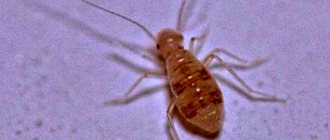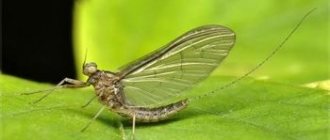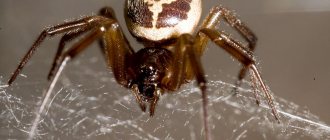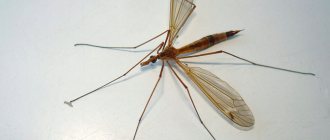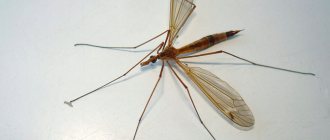The volume level of a person's voice fluctuates around 60 dB. However, it is unlikely that a human voice can compare with the volume of some animals and insects. Our surrounding world is quite unusual, and amazing animals live in it. It is interesting that some species are quiet and silent, while others, on the contrary, make too loud sounds.
Any sound above 120 dB can cause ear pain or even damage to a person. However, for the following animals, too much volume has become simply necessary for their survival in the wild. All of them are simply incredible and amaze with their amazing abilities.
Green cicada (main photo)
Many may be surprised, but these seemingly innocent and harmless insects are considered one of the loudest in the world. This species of cicada lives in coastal areas of Australia. The cicada is the world's loudest insect. The high-pitched, loud sounds emanating from male cicadas can often reach 120 dB. This sound is not only very annoying, but also quite loud and painful to human ears.
Cicadas themselves make this noise by rapidly vibrating their skeletons to attract females during mating. There are more than 200 different species of cicadas in Australia, but each has its own unique sound to help each species identify its family.
The role of sounds in the life of insects
Everyone knows that many insects can make sounds: some buzz, others creak, whistle and even sing... In the East, many hundreds of years ago, some types of cicadas were kept in special cages so that they would delight the ears of rich nobles with their songs. Among these insects were true virtuosos, demonstrating a variety of loudness, timbre and repertoire. Pampered court singers were highly valued. It was considered a special delicacy to give someone a cell with an arthropod “nightingale” as a gift. Such a gift was worthy of an emperor.
But you and I are more familiar with the free “bards” of nature - grasshoppers, cicadas, bumblebees, bees... It’s hard to even imagine a summer meadow or forest clearing without the songs of these insects. They inspired many poets, artists and even composers. But for some reason, for a long time they could not inspire scientists. Only in the 20th century. biologists began to take a serious interest in how and why insects make sounds. At the beginning of the century, the life of singing insects was studied by entomologist Zh.A. Fabr. He found that representatives of the Orthoptera order - grasshoppers and mole crickets - “talk” using the stridulation apparatus. On one wing of the insect there is a smooth and durable device (like the skin on a drum), surrounded by hard veins, on the other wing there is a strong vein with notches. By rubbing their wings, insects make sounds. Why not a violin with a bow? Other orthopterans - locusts (fillies, for example) - have to rub their legs, since their stridulation apparatus is located there. Such a device allows you to control not only the volume of the sound, but also change its timbre and frequency. Fabre believed that grasshoppers and locusts each had several dozen different songs. And Fabre considered crickets and trumpeters to be among the best “musicians” in the animal world - in their repertoire, according to some researchers, there are almost 500 different songs.
A few years after Fabre's discoveries, the Hungarian scientist Regen continued to study the role of songs in the life of grasshoppers. It is known that in the vast majority of species of these insects, females are voiceless; only males “sing”. In Regen's experiment, the female grasshoppers ignored the frantically singing gentlemen, who, seeing the females, carried out their roulades under a transparent but soundproof hood. The females saw the singers, but did not hear them, and therefore remained indifferent to them. However, when the insects were placed in different rooms and the males’ “serenades” were broadcast to the females, they became noticeably agitated. The love song was heard and received the due response.
If Orthoptera are called violinist insects, then cicadas (representatives of the order Homoptera) can be considered drummers. Their musical instrument consists of three membranes located in a large chamber on the insect's chest. A muscle is attached to one membrane, which (up to 20,000 times per second!) bends this membrane and hits the others with it. Complexly arranged resonators amplify the sound many times over. The “singing” of some species of cicadas is close in sound intensity to the roar of a steam locomotive.
In addition to grasshoppers and cicadas, there are more than 10,000 species of “talking” insects, and they conduct their “conversations” in extremely diverse ways. Some crackle the joints of their legs, longhorned beetles creak with segments of their abdomen, smooth bugs click their legs on their proboscis, butterflies make sounds by hitting themselves in the chest with a wing rib, click beetles click the joints of their heads and chest. Many insects can “talk” with their wings, vibrating them at different frequencies. The swallowtail butterfly (Papilio machaon) makes 5-6 beats per second, the mourning butterfly (Nymphalis antiopa) - 10. We are able to hear the low humming sound that hawkmoth butterflies make in flight, whose wings make 45-50 beats per second. Flying beetles also “sound”: the cockchafer buzzes, making 45-50 wing flaps per second, the dung beetle (Geotrupes vernalis) - 85-90, and ladybugs in flight flap their wings up to 100 times per second. Flying dragonflies and horseflies “sound” thanks to 100 beats per second, wasps, depending on the species, - 110-250, bumblebees - from 190 to 350. Bees work their wings even more actively - up to 450 beats per second, but when loaded with honey, they make up to 330 swings and buzzing lower. Mosquitoes are rightfully considered to be the record holders for “fast-speaking wings” - 500-600, and some - up to 1000 beats per second. At this frequency, the sound produced becomes unpleasant to our ears. Remember how the nightly itching of a flying mosquito irritates us.
But surprisingly, knowing about such a diverse repertoire, scientists for a long time could not determine how insects perceive sounds, and whether they perceive them at all. There were various assumptions, they even thought that grasshoppers, for example, hear with their whole bodies. And all this because none of the researchers could find ears on insects. But logic dictated that if there are special organs for reproducing sounds, then there must also be organs for their perception.
Some observations show that insects respond quite well to sound. An interesting incident occurred in 1956 at the dacha of an American scientist. On a pleasant warm evening, Professor K. Rehner received guests.
Everything was very nice, people were sitting on the veranda, enjoying the pleasant company, the weather and the fine wine. Night butterflies fluttered softly over the heads of those sitting. But then one of the guests accidentally ran a wet stopper across a thin crystal glass. A very high and piercing sound arose. And - lo and behold! — the flying night beauties fell together to the floor, like unconscious young ladies. The guests (and these were scientists) jumped up and began looking for the butterflies that had suddenly disappeared. And they were found lying “fainted” on the floor. Gradually, the “faint-hearted” insects came to their senses and began to crawl, and then fly, as if nothing had happened. The trick with the cork was repeated, and all the butterflies ended up on the floor again. And so on several times. Well, after that, what doubt could there be that the insects heard this sound, which literally threw them to the ground?
In 1957, the American biologist Gaskell managed to find the “ears” of grasshoppers. Who would have thought that the sound-sensitive organs of this insect are located on the legs, or rather, on the shins of the front legs and look like two narrow slits?! Butterflies have no less extravagant “ears”: in daytime butterflies they are located at the base of the fore wings, in night-time butterflies they are located between the chest and abdomen. And other insects, as it turns out, have “ears” in the most unexpected places: on the chest, on the antennae, on the tail filaments, etc. In general, who knows what! The structure of these organs also differs. One of the most common is the tympanic “ears” (tympanum translated from Greek as tambourine or drum). They consist of a cavity closed by a thin film - a sensitive membrane, from which the nerves heading to the brain extend. Another type is the “ears” located at the base of the antennae. This highly sensitive formation is called Johnston's organ. Its cells pick up the slightest vibrations in the air and transmit the received information to the brain. In principle, the sound-perceiving organs of insects, compared with those of some other types of animals, are structured very primitively. Does this mean that grasshoppers, butterflies, cicadas and other species have difficulty hearing? Not at all. Scientists have found that the sensitivity of insect hearing is simply implausible. Thus, a grasshopper basking in the rays of the sun somewhere in the Moscow region is able to perceive the noise from the aftershocks of an earthquake in Japan. Like this!
Sound, as you know, has several characteristics. Its strength is usually expressed in decibels, and its frequency (the number of sound waves, or vibrations, per unit time) - in hertz. One hertz (1 Hz) is one oscillation per second, 10 Hz is 10 oscillations, etc. The higher the frequency, the higher (thinner) the sound and vice versa. Sound with a frequency above 20,000 Hz (20 kHz) is usually called ultrasound, and below 20 Hz - infrasound. You and I are able to perceive sound in this range, from 20 Hz to 20 kHz. But for insects this is not the limit. Thus, several species of grasshoppers hear ultrasound with a frequency of 70 kHz, and moths detect vibrations of more than 200 kHz, which is 12 times greater than human hearing.
In insects, not only adults hear. Experiments by English scientists L. Koch and D. Huxley with caterpillars of bear and moth butterflies showed that they perceive sounds, and react rather strangely to some. The sounds of music, surprisingly, caused an aggressive reaction in the caterpillars. At the first beats they froze in fear, then tried to run away. If the sounds did not stop, the caterpillars assumed a threatening pose. Well, what can you do, they don’t like music!
Biologists have been racking their brains for a long time, trying to understand what these soft-bodied and non-musical creatures hear. It turned out that they perceive sounds through numerous hairs covering their body. Bear caterpillars got their name from their thick fur, but moth caterpillars have thin and transparent hairs, almost invisible to the naked eye.
But what is the significance in the life of insects of the sounds they make themselves? In grasshoppers, “singing” plays a very important role in procreation. A male, selflessly performing roulades, is heard by many females of his species. However, only the unfertilized rush to meet him. Thus, the sound makes it very easy for single ladies to search for a vacant gentleman. “Songs” have a similar meaning in the life of mosquitoes. Almost all males squeak the same way. But the females are such entertainers! Not only do they squeak completely differently from males. Fertilized females “sound” different from unfertilized females, and adult females sound different from young or very old ones. All this makes life much easier for mosquito males, who usually strive for unfertilized mosquitoes that are not too young and not too old. Mosquito gentlemen perceive the “singing” of beautiful ladies with their antennae. Moreover, the fluffier the mustache, the better the hearing. The whiskers of male mosquitoes become fluffy only at a certain age. And it’s still too early for beardless, or rather, non-feathered youths to look for partners. Female mosquitoes do not need whiskers at all, since they do not look for partners - they will fly in on their own.
Another interesting feature of the luxurious whiskers of mosquito cavaliers is that they cannot be used to perceive other sounds. Like a radio receiver, they are tuned to only one frequency - the one emitted by the wings of a female in the desired state.
It is interesting that the first to come to the conclusion that male mosquitoes search for female friends using hearing was not a biologist, but an American engineer H. Maxim, who went down in history as the inventor of the heavy machine gun. While installing a chain of electric lights, he noticed that a swarm of male pinnate mosquitoes was hovering around the transformers. Maxim tried to publish his observations, but was ridiculed...
Thus, sound helps insects find each other during the mating season, but this is not its only role. The insects use sound to warn rivals to stay away. In addition, sound can be used to signal impending danger. Remember the “fainting” butterflies at the American scientist’s dacha. The fact is that moths are able to hear bats. These dangerous hunters use ultrasound to find food. So, the butterflies, having caught it, escape as best they can: some “lose consciousness” and fall down, others abruptly change their flight path. And female bloodsucking mosquitoes need a squeak not only to attract vegetarian males - it can also serve as a warning of danger. When one of the mosquitoes flees, it makes a more shrill sound, and the others, hearing it, react accordingly.
In insects, mimicry is not uncommon - a phenomenon when completely harmless species disguise themselves as poisonous, stinging ones. In bee flies and wasp flies, this imitation goes even further: they copy not only the appearance and color, but also the sound made by bees and wasps when flying. So, a flying wasp makes 150 strokes per second, and the flies that imitate it are almost the same - 145-147. To birds and mammals these sounds seem the same, but the insects themselves clearly distinguish them. And a fly will never confuse a wasp with its relative and vice versa. This is very convenient: both people recognize them and strangers are afraid of them.
Sound is especially important for social insects, whose colonies live and function as a single harmonious organism. To maintain the normal functioning of such a complex structure, termites, bees, ants and some other species have different methods: “languages” of smells, gestures and, of course, sounds. Termites, for example, warn each other about impending danger not only with special substances - fear pheromones, but also with special sounds. Hard-working bees usually do not fight, but if it is necessary to defend a house, they make a special sound with their wings, at the same time spreading the “smell of attack” around them, and together they rush into battle. A sound for bees - and a pass into the hive. As you already know, a light bee makes about 400-450 beats per second, and a bee carrying prey into the hive makes about 330. For our ears, this difference is almost imperceptible, but for the bee guards who guard the hive, it is very noticeable. And these strict guards will never let bees into the house if they return empty. And even more so, they will not allow marauding bees to enter, who, instead of working on flowers, are just waiting for the opportunity to steal nectar from someone else’s house. Sound is no less important for the transmission of information by scout bees. During their famous dances, they tell their relatives where and in what quantity there are flowers full of the desired nectar. Zoologists have found that their story consists not only of movements and smells, but is also accompanied by a hum of a certain frequency.
Having learned about the role of sound in the life of insects, scientists began to try to use this knowledge in practice.
For example, in 1948, 70 years after H. Maxim's observations, attempts were made to repel or trap mosquitoes using sounds of a certain frequency. This turned out to be not so easy, since these insects can only hear sound at a very short distance. But scientists continue to work in this direction. The sound was able to drive away hungry locusts from the fields. Devices whose sound is designed to repel mosquitoes are now on sale. Advertising, of course, describes their effectiveness, but not all consumers agree with this. All these developments are just the first steps, and a lot of work is still ahead to find out what insects “talk” and “sing” about. Literature
Dmitriev Yu. Neighbors on the planet. Insects. - M.: Children's literature, 1977. Animal life. - M.: Education, 1984, vol. 3. Marikovsky P. To the young entomologist. - M.: Children's literature, 1978. Fabre P. Insects. - M.: Mir, 1976.
G.N. Tikhonov, association of pedagogical publications “First of September” (www.1september.ru)
Hyena
This animal, which looks a bit like a dog, has been known to many since the release of the Disney animated film “The Lion King” as a species that constantly struggles for power with the king of animals - the lion.
Spring solstice (March 21): how to banish misfortunes from your home on this day
The skin of the face will say “Thank you”: why it is better to replace terry towels with paper ones
Cat Duoduo conquered the Internet with wigs and outfits (photo)
When attacking or detecting a food source, hyenas can easily make various sounds that resemble either an ominous laugh or an overly loud alarm. Sometimes the noise that hyenas make can be so loud that it can reach 112 dB.
Where does sound come from?
Crickets and grasshoppers make sounds according to the same principle, but in crickets this mechanism is more advanced than in grasshoppers. Therefore, the sounds that a person hears are more melodic and more varied.
The quality of sounds produced by members of the cricket family largely depends on environmental conditions, as well as temperature. Crickets are fairly heat-loving insects and already at temperatures below +21 degrees they hibernate.
Important point! As a rule, crickets are most active and “sing” most intensely on a hot summer night.
A similar acoustic apparatus is found exclusively in males. The musical sounds made by these insects are somewhat reminiscent of the sounds made by a violin. This is not surprising, since they have a special vein under the wing. This vein is set in motion with the help of fender liners, which is why sound waves arise. According to experts, crickets cricket or chirp. Both expressions are absolutely acceptable in relation to these “musicians”.
Hippopotamus
This may seem quite strange to you, but in fact, hippos that are quite cute and funny at first glance sometimes become the most dangerous animals in Africa.
Hippos are quite aggressive and are even famous for tirelessly pursuing prey at a speed of 30 km per hour. They also make quite loud sounds, which is why they are considered one of the loudest animals. Hippos grunt and moan at an astonishing volume of 110 to 114 dB.
In classical music[edit]
French Renaissance composer Josquin des Prés, active in Italy, wrote a work in frottola style called El Grillo
("Cricket"). This is one of his most frequently performed works. [7]
Play media
Carol Williams performs "Flight of the Bumblebee" by Nikolai Rimsky-Korsakov.
Nikolai Rimsky-Korsakov wrote "Flight of the Bumblebee" as an orchestral interlude to his opera "The Tale of Tsar Saltan"
, written in 1899–1900. The play concludes with Act III, Tableau 1, during which a magical swan bird transforms Prince Guidon Saltanovich (the king's son) into a bumblebee so that he can fly away to visit his father, who does not know that he is alive. The work is one of the most recognizable in classical music. The music's fast tempo has led to its mass appeal as well as its difficulty to play. The musicians rose to the challenge, setting world records for fast playing guitar, piano and violin. [8]
The play contains two leitmotifs: a simple main theme and the motive of the rapid buzz of a bumblebee. Play the base theme (help info) and play the buzzing tune (help info)
Canadian violinist Eric Speed broke the record for the fastest performance of "Flight of the Bumblebee" at the Just For Laughs festival in Montreal on July 22, 2011, playing the piece in 53 seconds. [9] The song has a direct reference to martial artist Bruce Lee, who starred in the radio program Green Hornet. "Flight" was the show's theme song, mixed with a hornet-like buzz created on a theremin. [10] The play on which the opera is based, written by Alexander Pushkin, originally had two other themes about insects: "The Flight of the Mosquito" and "The Flight of the Fly." Neither were turned into musical works. One was made as an illustration for the original publication. [eleven]
In Béla Bartók's whimsical, sympathetic work From the Diary of a Fly for piano (Mikrokosmos Vol. 6/142)
an attempt is made to depict the actions of a fly caught in a web from
the fly's point of view, i.e.,
how it relates to his diary. The buzzing means the fly is desperately trying to escape. [12] The middle movement of the Adagio Religioso in Bartók's 1945 Piano Concerto No. 3 contains imitation of natural insect sounds and bird calls. [13]
Wolf
The first thing that comes to mind when you think of wolves is that they howl at the full moon. These are simply nocturnal animals that lead an active life at night.
The animated series "Peppa Pig" will last until 2027 with 104 new episodes
How can a woman keep a man? Zadornov named the main female mistake and gave advice
The role of advisor to the school director on educational work was offered to Urgant
Wolves only howl when they are marking their territory or trying to contact members of the pack. To do this, they simply need a very loud sound. The howl of a wolf is quite loud and can reach up to 115 dB; it can be heard even several kilometers away.
Links[edit]
- ^ a b Morris, 2006.
- Tucker, Sandy (May 16, 2012). "Music of Canada's Bug Season". CBC Music. Archived from the original on March 1, 2016. Retrieved April 9, 2016.
- Hogue, Charles (1987). "Cultural Entomology". Annual Review of Entomology
.
insects.org. 32
: 181–199. DOI: 10.1146/annurev.en.32.010187.001145. Archived from the original on June 17, 2012. Retrieved April 4, 2016. - "Insects in Music, Art and Poetry". Oregon State University. Retrieved April 4, 2016.
- Ripert, A. Bowdoin Wang (December 31, 2010). Learning from Mickey, Donald, and Walt: Essays on Disney Entertainment Films. McFarland. ISBN 978-0-786-45957-5. Retrieved November 7, 2022.
- Billboard . Nielsen Business Media. 1985. p. 57. ISSN 0006-2510.
- Macy, Patrick. Songs around the campfire: The musical heritage of Savonarola.
Oxford: Clarendon Press. 1998. ISBN 0-19-816669-9. Page 155. - "Rimsky-Korsakov - Flight of the Bumblebee (Home Musical Assessment)". Retrieved August 21, 2012.
- » » Eric Speed, violinist, Flight of the Bumblebee, Nikon S9100, Montreal, July 22, 2011 » » . Retrieved April 21, 2012.
- "Green Hornet" . Retrieved August 21, 2012.
- Neff, Lyle. (1999). "The Tale of Tsar Saltan: 100th anniversary of Rimsky-Korsakov's Second Pushkin Opera." Pushkin Review
.
2
: 89–133. - "From the Diary of a Fly, for piano (Mikrokosmos Vol. 6/142), Sz.107/6/142, BB 105/142". Retrieved August 21, 2012.
- ↑
Kovacs, Janos, "Piano Concerto No. 3" Booklet for Hungaroton HCD 31888-91 (2000) - “What song defines the Dave Matthews Band?” . Retrieved August 21, 2012.
- Demalon, Tom. Insects in music on AllMusic
- "David Rothenberg:" The Music of Error: How Insects Gave Us Ree. The Diana Rehm Show. Retrieved April 2, 2016.
Sea Elephant
These animals are considered one of the largest mammals living in the eastern Pacific Ocean. These animals use a variety of sounds to communicate, and each individual of these animals has its own rhythm by which it can be identified.
Elephant seals use their small proboscis to produce extremely loud sounds that can reach a significant range of up to 126 dB. Such sounds can be easily heard even after several kilometers.
Whale
These are the largest animals on our planet and the owners of the most powerful and loud voice. Sperm whales are considered the loudest. At the very top of the volume, the sounds they make can reach 230 dB.
Russian tourists will be allowed into Cyprus without quarantine
The State Duma has banned the removal of stowaway children from transport
How to celebrate the Larks holiday (March 22) so as not to attract misfortune
For example, blue whales are capable of producing sounds whose volume reaches 188 dB. Whales use such sounds for a kind of communication with other members of the pod or for easier navigation under water.
Elephant
These animals are considered one of the most socially developed. They use trumpeting, snorting, roaring and many other sounds to communicate.
Each sound represents a completely different information or emotion that the animal is trying to convey, such as joy, danger or anger. Sometimes the volume of such sounds can reach 117 dB.
In addition to using different types of sounds, elephants also hear very well, which is not at all surprising when you have such huge ears.
a lion
The King of the Jungle can be very loud, almost too loud. The roar, which reaches a volume of 114 dB, makes the lion the loudest of all wild cats in the world. To be precise, the roar of a lion is so powerful and loud that it can be heard quite easily even at a distance of 8 km.
With skirts and pants: how to stylishly wear knee-high boots - spring 2021 trend
5 things predicted in 2010 by writer Gary Shteyngart that came true
6 castles before they turned into ruins: designers restored their appearance
Just like cats, lions can purr, growl and even grunt. Lions roar only to show everyone else their dominance in a certain territory, as well as to frighten and warn enemies.
What are cicadas? Description of the insect
Outwardly, these arthropods look like either large flies or fat moths. However, they are not close relatives of either of them. Even with singing grasshoppers and crickets, cicadas do not have common roots. The closest to them, oddly enough, are bedbugs . Including blood-sucking bed parasites that disturb people's sleep at night, and sometimes attack even during the day.
__________________
You can read about bed bugs here:
– Bed bug: features and difficulty of fighting
– Is it possible to get rid of bedbugs using folk remedies?
– Why do they appear again after baiting cockroaches and bedbugs?
– How to prepare an apartment for bedbug treatment
__________________
According to the scientific classification, these insects, like cicadas, belong to the order Hemiptera. This group also includes aphids - malicious pests of crop production. So what does a cicada look like? We attach a photo of the insect. It's better to see once than to hear many times...
Appearance and structure of cicadas and their larvae
These are quite large insects. Cicadas in our area reach a length of 5 cm . Tropical counterparts are larger. Transparent wings, stocky bodies and wide-set large eyes make them look like huge flies. However, two pairs of wings when spread give them a moth-like appearance . (Recall that flies are dipterous insects, like mosquitoes, and have only one pair of wings). Well, they are similar to grasshoppers in that they can chirp and - some - jump . The legs of cicadas are adapted not only for crawling, but also for short jumps and flights.
Color can vary greatly from species to species . The femurs of the front pair of legs are noticeably thickened and equipped with clearly visible spines. The oral apparatus has the shape of a proboscis. With its help, cicadas pierce plant tissue and drink their juice. This is what they feed on.
Cicada larva
The larvae are only vaguely similar to adult insects . Although there are still certain similarities. Unlike sexually mature individuals, cicada larvae do not have wings, since they do not need wings underground where they live. But the thickened front paws are ideally suited for life in the soil . They are somewhat claw-like and are good at digging underground passages.
How do cicadas develop and where do they live?
Insects are distributed throughout the Earth, on all continents . There are especially many of them in hot parts of the world. Desert areas are no exception. There they adapted to coordinate their development with the local climate. Thus, with the onset of favorable wet periods, a simultaneous mass appearance of a horde of cicadas on fresh greenery . Insects, as if by magic, crawl out of the ground and begin courtship. It is they who are accompanied by loud choral invocation singing.
In Russia, you can listen to the collective sounds of cicadas in the Krasnodar Territory, Crimea, and on the Black Sea coast. Residents of neighboring countries - Abkhazia, Turkey and others - are also well acquainted with the singing of these insects. The summer air is literally filled with their endless chirping.
The life activity of these arthropods is closely related to plants . They live on them, feed on them and lay eggs in their tissues. Cicada larvae also live on vegetation for some time. However, then they go into the ground. There, the younger generation feeds on juices that they suck from the roots of various plants. This stage of life can last quite a long time. At least, it takes the most time during the insect’s existence. Juvenile cicadas growing in the ground and digging underground passages in the soil can stay there for up to 17 years ! At the same time, they undergo several molts until they grow to their final size.
__________________
Interesting fact
Periodic cicada
It was this year - in 2022 - that another mass appearance of cicadas . In May, representatives of the periodic cicada species (Cicada septemdecim) literally overnight covered trees, the ground, cars, buildings, etc. This is exactly the species whose larvae develop in the soil for 17 years . Now they have crawled into the light, causing genuine interest among many residents of the United States and some concern among local farmers and plant growers.
__________________
Cicada molts
Ready to transition to adulthood, the larva emerges to the surface . This is where she sheds her last coat. When exposed to air, the old skin dries out and bursts, starting from the head. Then the old chitinous cover is torn from above in the chest area. Thus, a hole appears large enough for the formed insect to crawl out into a “new life.”
How long do adult cicadas live? Insects in a sexually mature state do not exist for very long. Just two or three months ) Sometimes even one. All this time is mainly aimed at finding a couple for procreation. Adults are not interested in anything else. They lead a rather lazy lifestyle , practically constantly sitting motionless in the trees. Insects are revived only under the rays of strong sun. Then they swarm and show maximum activity.
Tiger shrimp
This is not surprising, but it is indeed a fact: the tiger shrimp is capable of producing sounds up to 200 dB deep under the water of the Pacific Ocean. Tiger shrimp are famous for their strong and powerful claws.
When prey approaches, the shrimp swings its claws at incredible speed. This creates a wave in the water that helps kill the prey. At the same time, air bubbles from the movement of the shrimp create a fairly loud noise in the range of 200 dB. These are simply incredible shrimp abilities.
Found a violation? Report content





